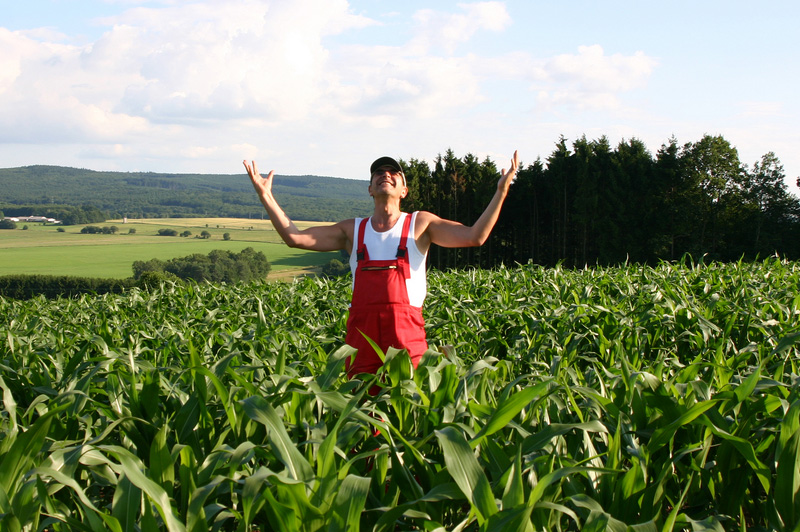While small-scale producers of fruits and vegetables are scraping by, it’s a whole ‘nother story for corn and soy farmers. (It’s always a whole ‘nother story for corn and soy farmers, really.) Well-oiled subsidies, overseas demand, ethanol like whoa, plus a drop in production thanks to the drought are all pushing crop prices up — and, in turn, prices for the land those crops are grown on.
The New York Times reports on the gleeful farmers, speculating investors, and impending economic doom.
Across the American heartland, farmland prices are soaring. In places like Waco, Neb., and Chickasaw County, Iowa, where the boom-and-bust cycle of farming reaches deep into the psyche, some families are selling the land that they have worked for generations, to cash in while they can. …
Sensing opportunity, investment firms are buying, too. David Taylor, of Oskaloosa, Kan., said he was saddened to sell his family’s farm but that the prices were too good to resist. …
“I bawled like a baby,” Mr. Taylor, 59, said. His crop-producing fields sold for $10,100 an acre.
In Iowa, despite the drought last year, farmland prices have nearly doubled since 2009, to an average $8,296 an acre, far surpassing the last boom’s peak in 1979. In Nebraska, the price of irrigated land has also doubled since 2009.
That’s given farmers who’ve chosen to stay a whole lot of value to borrow against, and borrow they are. Farmers’ debt load has risen almost a third since 2007.
Regulators say it is difficult to determine exactly how much farm debt exists, because much of it involves debt owed to various vendors and suppliers.
“In so many ways, we’re blind to some of that information,” said Jason Henderson, a vice president at the Omaha branch of the Federal Reserve Bank of Kansas City.
What banksters aren’t blind to is the potential for profit. More investors, including foreign banks, are moving in to snap up high-priced land and rent it back to farmers. The whole dynamic smacks of a bubble — one that deserves to pop, but that will make a big mess for the folks invested in it.
“There are some opportunities out there, but man, it’s tough,” said Shonda Warner, a former Goldman Sachs trader who returned to her Midwest farm roots in 2006, when she started Chess Ag Full Harvest Partners, a private equity firm that specializes in farmland. Like many other investors, Ms. Warner’s fund buys land and then rents it to farmers. As land prices have risen sharply, so have rents.
“I worry about people who are buying farmland and expecting to get big rents, $500 or even $600 in the Midwest,” Ms. Warner said. “What happens when corn prices fall next year and they can’t pay? What are you going to do? Take their television set?”
Uh, yeah, Warner, that’s exactly what the debt collectors will do. And then, ironically, those now TV-less ex-farmers will only be able to afford cheap processed foods and meat from animals fed corn and soy. Oh, I almost forgot: Happy National Agriculture Day!




